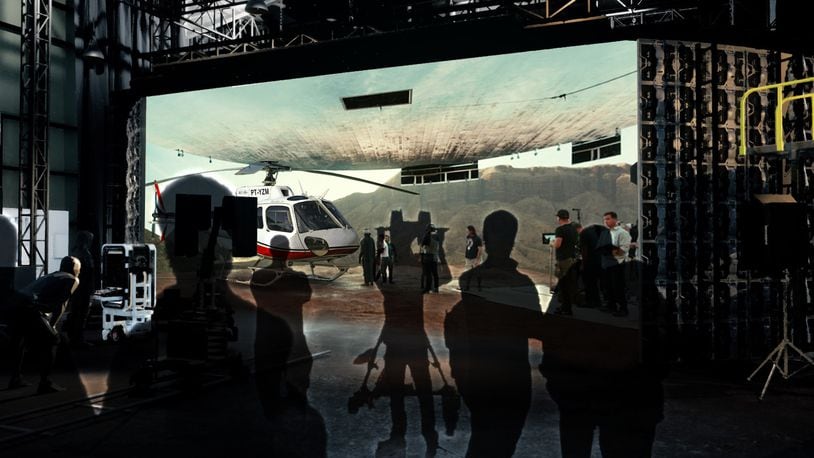The studio, which could really be described as a “campus,” according to DiFranco, will be the largest production studio in the Midwest and is estimated to cost $25 million.
Credit: CONTRIBUTED
Credit: CONTRIBUTED
Grigsby called 1913 Studios a game changer for the film industry in Dayton. The facility will also help bring national attention to the students of the Tom Hanks Motion Picture School at Wright State University and create new internship opportunities for students.
With 40-foot-tall ceilings in the building’s warehouse space and 60 office spaces, the facility will allow entire productions — from set creation to sound editing and everything in between — to take place in Dayton.
“(It’s going to have) everything you need to make a movie,” Grigsby said. “You’re going to have everything in one place. It’s going to create an incredible amount of jobs for the area.”
DiFranco and Seth Hummel, co-founders of 1913 Studios, are bringing decades of experience in the industry and of film investment knowledge back to Dayton, their hometown. Katey Selix, a Denver native, is also a co-founder.
It was a serendipitous moment for the co-founders when they stepped into the warehouse space for the first time, DiFranco said. They almost didn’t need to see the rest of the facility to know they had found the studio’s home.
“It’s in a close proximity to downtown, and close proximity to the Air Force Base, and Wright State and to The Modern and all these other groups and organizations, like, it’s right where we want to be.”
The name, 1913 Studios, is a direct callback to the Great Dayton Flood of 1913.
“So we were born out of out of the COVID pandemic (production) break,” DiFranco said. “We were able to get the right people in the right seats at the right time because of that situation. So for us, out of tragedy, came a birth of innovation, very similar to what happened in Dayton (after the flood).”
Credit: CONTRIBUTED
Credit: CONTRIBUTED
The COVID pandemic gave studios a chance to pause and look at what the future of film and television looks like. Part of what they learned, DiFranco said, is that film is experiencing a wave of “decentralized production” and by investing in Ohio and Dayton, 1913 Studios is riding that wave.
“Here’s what I like about them,” Grigsby said, “they’re real, they’re excited about Dayton and they understand the big picture. … These guys have worked internationally. So they understand how to make it appealing (to film in Dayton).”
Better tax incentives than in major film production cities like Los Angeles and Atlanta, the accessibility to both urban and rural settings within a short distance, cost of living and space availability were a few of the top reasons Grigsby said Dayton and 1913 Studios will be a desirable destination for film makers.
“The average hotel room in Atlanta has cost you $179 a night,” Grigsby said. “In Dayton, guess what? We’re going to get you that room for $69 to $89. … And when you talk to people, especially from LA, for them to shoot two locations in a day (because of) the traffic in LA, that’s unrealistic sometimes.”
In it for the long haul, DiFranco said they couldn’t ask for a better place to hang their hat.
“I tell people my personal goal with this project is for Dayton to be the creative capital of Ohio,” DiFranco said. “And it’s not just because of us, but I hope that we can be that first step and then work with local institutions and organizations and help grow that mentality.”
About the Author
